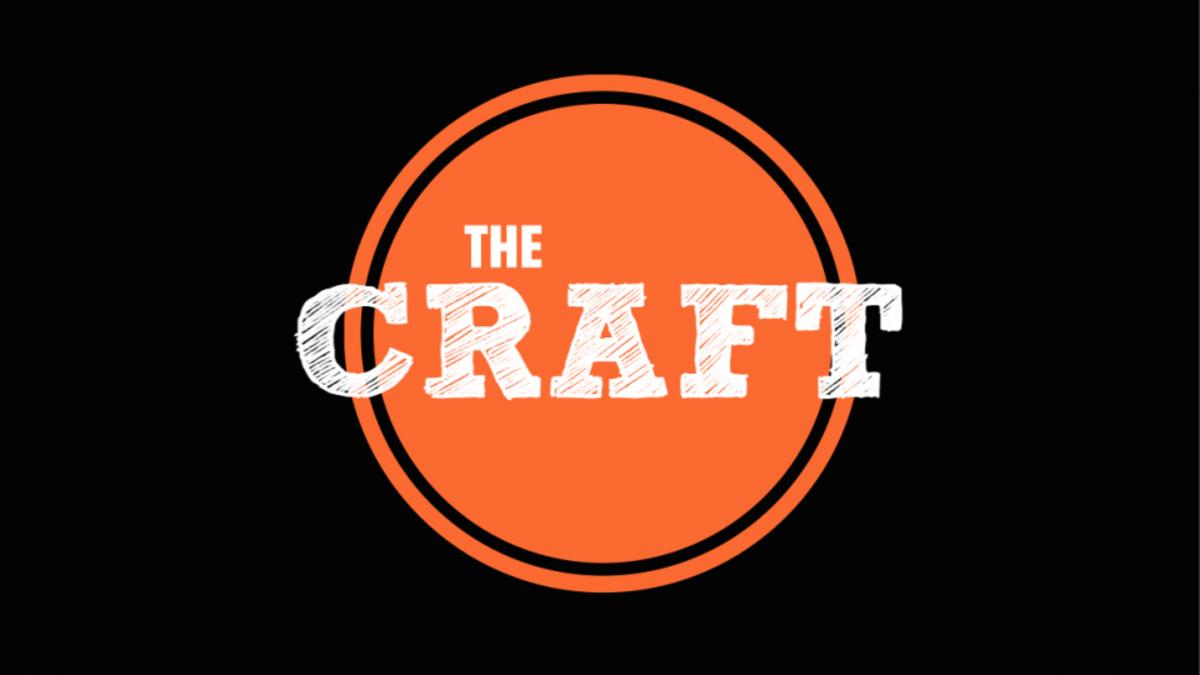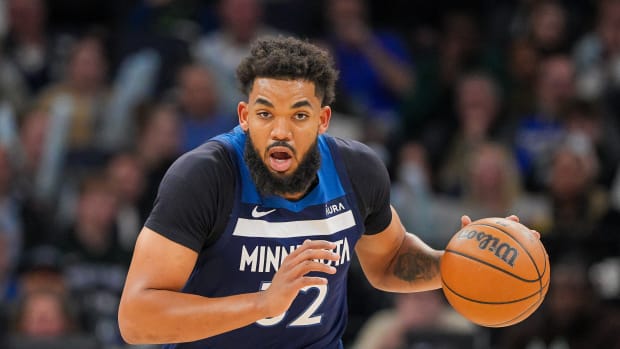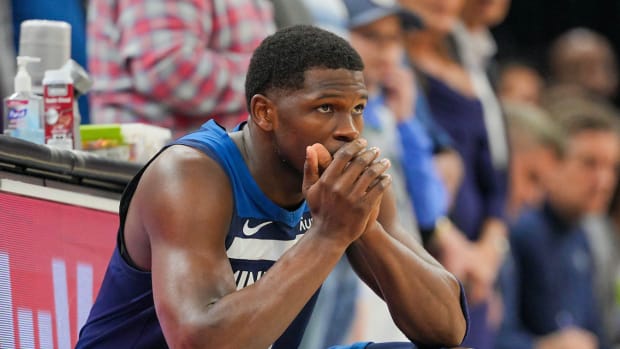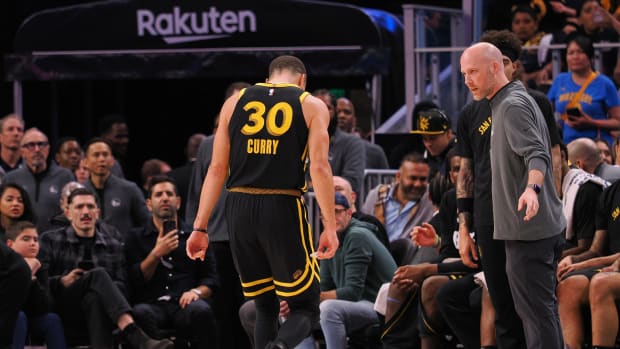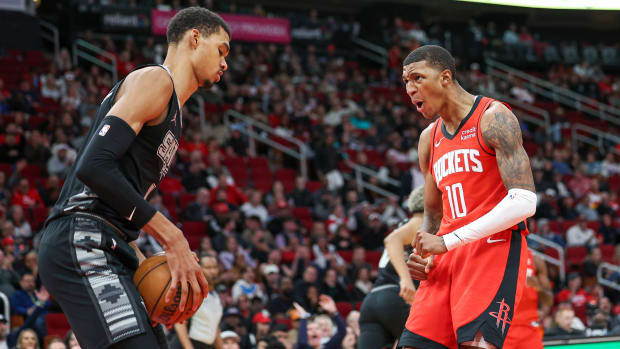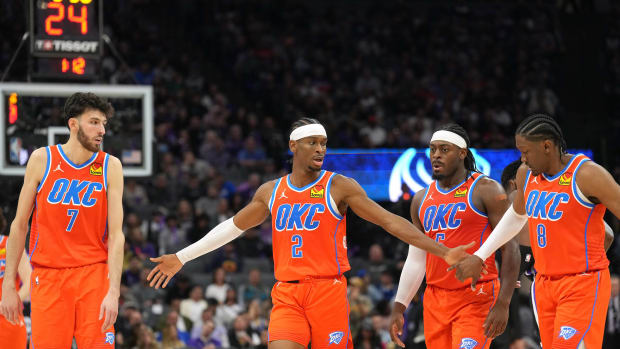The Craft: NBA development series (II)
The Craft is a serial look inside the world of player development in the NBA. You can find all five installments for the 2015-16 season below and all previous installments here.
The prevalence of small ball has made offensive perimeter play a crucial part of the rubric in evaluating bigs—and power forwards in particular. Range shooting is an easy litmus test, confident playmaking a more nuanced indicator. A given player’s success in a small-ball world, however, may be even more dependent on their ability to comfortably wade out to the three-point line and beyond when in coverage. Favors, despite his build as a traditional big, has become remarkably good at this over the past year.
“Early in my career, I was at the rim a lot because the NBA wasn't where it is now,” Favors said. “So I was close to the rim and I was effective blocking shots, clogging the paint, making it tough for guys to score. But with the way the NBA is now, there are a lot of fours that can stretch the floor and shoot the three. That kind of takes me away from the basket. I don't get as many blocks as I used to because I'm out on the perimeter guarding. That's the difference now. I've gotta be out on the perimeter moving my feet, chasing guys off screens, helping and getting back to the three-point line, or switching on the guards. That's the tough part.”
Read the full piece here.
His work isn’t finished. Walker continues to meet with [shooting coach Bruce] Kreutzer almost every day to fight off old habits and push through the discouragement of shooting slumps. But again: everything for Walker begins with the jumper. Charlotte’s offense went sideways last season when opponents dared him to shoot. Walker would oblige, at times, without much success. By improving enough for opponents to take notice, Walker both juices his personal efficiency by trading out some of his long two-pointers for threes and completely unsettles the way the Hornets have traditionally been defended. At long last Walker is evolving in a way to take advantage of the changing geometry of the league, wherein opponents key in closely to the threat of the three-point shot.
“Think about it,” [Hornets coach Steve] Clifford said. “So let's say the pick's set up near the three and they're going under. You can screen again, but one, it takes longer, and two, it changes the spacing. They have time to adjust. Versus now if they go under, he's pulling and he's making them. So they're [going] over the top and it literally – if you look at it – it gives him sometimes four or five more feet of room to attack. There's literally more room on the floor that they have to guard him. And he's so fast and quick, that's difficult to do.”
Read the full piece here.
The Ibaka who stormed the Thunder lineup in 2009 was, by his own admission, an energy player. He ran the floor. He blocked shots. He rebounded. This is the currency with which a young, unproven big buys opportunity, and Ibaka had no qualms in making that particular exchange. The core of Ibaka’s game retains that same spirit of accommodation to this day. In praising the evolution of Kevin Durant and Russell Westbrook over the years, we’ve often left it unsaid that Ibaka has managed to effectively accompany both high-usage superstars at every developmental juncture. No matter the shifting lineups and talents around him, Ibaka’s game is a miracle of fit.
This is primarily due to the extraordinary intersection of two particular skills. The first is rim protection—that coveted ability to protect the most sacred and efficient space on the court. Ibaka showed terrific aptitude in that particular regard from the very start of his NBA career.
“He had a good feel for when to help, when to challenge shots at the rim,” Thunder mainstay Nick Collison said of the rookie Ibaka. “Not a lot of guys have it. There's a lot of guys that they'll draft and they'll say, 'He's long, athletic—he's gonna be a great shot blocker.' But they don't understand how to do it. [Ibaka] always had a good feel for it, and his game has expanded because he's worked so hard.”
Read the full piece here.
"I think it was pretty obvious in the beginning that I was just a good shooter," Nowitzki said. "I was seven feet but I was a spot-up shooter. Guys would try to run me off the three, so my first priority was an off-the-dribble move. You've got to have a little in-between game if you want to get better."
This became the basic format of Nowitzki's basketball advancement. Take what you do well and hone it to the point that opponents have no choice but to adjust. Then, after forcing the defense's hand, build an easily accessible counter that renders their adjustment irrelevant. A hard close-out begets a mid-range jumper off of one or two dribbles. Make that shot consistently enough and the defense bends again—this time putting itself in an even more vulnerable position. Nowitzki rarely took pause in those early years, transitioning from regular season play into his work with mentor/shooting coach/basketball sage Holger Geschwindner to time with the national team and a stint in summer league. There was always a venue to act as a vehicle for his improvement, even if it was merely an empty gym under Geschwindner's watch.
Read the full piece here.
It’s possible that, despite his efforts, Payton’s shot never progresses meaningfully beyond that point. Some successful guards have played out full careers without ever finding that range. Dwyane Wade has never shot better than 31.7% from three in a season. Andre Miller only topped the 30% mark on a fluke. The priorities of the modern NBA will demand that Payton keep trying to build his credibility from outside, though consistent shooting may not come for some time, if at all. There’s no question that the three could transform Payton’s game and open up a wealth of options for the Magic. Yet Payton must also go about his broader offensive development as a sort of recourse—the kind of tool-building and refinement that could make him a valuable player even if the long ball never comes.
Doing so will require a different kind of threat projection. When Payton scans the league for point guards he can learn from, he keys in on one in particular: Chris Paul. The Clippers point guard is a genius when it comes to the manipulation of a defense, able to deftly position opponents for the purpose of exploiting them. “I love his game,” Payton said. “Just how he gets to his spots. That mid-range pull-up. He's got that floater. Guys are so worried about him passing sometimes that he gets a layup—a clean layup—just because they're so worried about that lob or him kicking it to [a shooter].”
Read the full piece here.






























